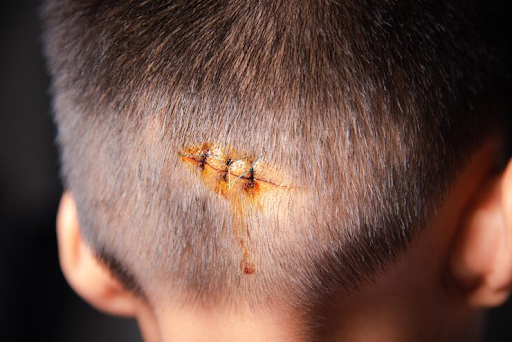Hair transplants have become a trusted solution for individuals struggling with baldness or thinning hair. Most people are familiar with standard procedures designed to restore hair in cases of genetic hair loss. However, not all hair loss is caused by hereditary factors. For many, scarring from accidents, burns, or previous surgeries leaves areas of the scalp unable to grow hair naturally. In such cases, a specialised approach known as hair transplant for scars can help.
This article explains how scar-related transplants differ from standard procedures, the techniques used, the challenges involved, and what patients should know about hair transplant cost when considering this option.
Why Scars Affect Hair Growth
Before understanding scar transplants, it is important to know why scars impact hair differently than healthy skin.
When the scalp is injured—whether through trauma, burns, or surgery—the body produces scar tissue to repair the area. Unlike normal skin, scar tissue lacks the same network of blood vessels and follicles. This makes it more difficult for hair to grow naturally, even years after the wound has healed.
Because of these differences, standard hair transplant techniques often need adjustments when performed on scar tissue.
Standard Hair Transplant Procedures Explained
In most cases of genetic baldness, patients undergo one of two main transplant techniques:
FUT (Follicular Unit Transplantation)

- A strip of skin with healthy follicles is removed from the back of the scalp.
- The strip is divided into follicular units and transplanted into thinning or bald areas.
- Provides dense coverage but can leave a linear scar.
FUE (Follicular Unit Extraction)
- Individual follicles are extracted one by one using tiny punches.
- The follicles are transplanted into the recipient area.
- Leaves minimal scarring and is less invasive.
Both procedures work well for standard genetic hair loss because the scalp tissue is healthy, with good blood supply and natural elasticity.
How Hair Transplants for Scars Differ
Performing a hair transplant for scars presents unique challenges compared to standard procedures. Here’s how they differ:
1. Blood Supply Considerations
Healthy scalp tissue has excellent blood circulation, which nourishes transplanted follicles. Scar tissue, however, often has reduced blood flow. This means transplanted follicles may struggle to survive. Surgeons may need to carefully assess whether the scar can support new hair and sometimes recommend treatments to improve circulation before transplantation.
2. Density and Survival Rates
In standard procedures, grafts usually have high survival rates. In scarred areas, survival rates can be lower due to the different tissue structure. Surgeons often transplant fewer grafts at first to test how well they take root before planning additional sessions.
3. Surgical Technique Adjustments
The angle, depth, and spacing of grafts must often be modified when working with scar tissue. Surgeons may use smaller grafts or spread them out to increase the chances of survival.
4. Healing and Recovery
Scar tissue can take longer to heal compared to healthy skin. Patients may also experience more visible redness or sensitivity in the treated area. Recovery protocols are usually tailored to minimise complications.
5. Realistic Expectations
Unlike standard transplants, where dense coverage is achievable, scar transplants may only restore partial density. However, even modest improvements can significantly enhance appearance and confidence by softening the visibility of scars.
Techniques Used in Hair Transplant for Scars
Surgeons may use one or more of the following techniques to improve results in scarred areas:
- FUE for Scars – Favoured due to its precision and minimal invasiveness.
- Microneedling or PRP Therapy – Sometimes performed before or after transplantation to stimulate blood flow and improve graft survival.
- Staged Procedures – Multiple smaller sessions may be required instead of a single large transplant.
- Camouflage Methods – In some cases, hair transplants are combined with scalp micropigmentation to conceal scars more effectively.
Factors Influencing Hair Transplant Cost
The hair transplant cost for scar repair often differs from standard procedures. Several factors contribute to pricing:
- Size and Type of Scar – Larger or more complex scars require more grafts and longer surgery times.
- Technique Used – FUE tends to be more expensive than FUT due to the detailed extraction process.
- Number of Sessions – Scar tissue may require multiple procedures, increasing overall costs.
- Surgeon’s Expertise – Highly skilled surgeons with experience in scar transplants may charge more, but their precision often leads to better outcomes.
- Location of Clinic – Costs can vary depending on whether the procedure is performed in a metropolitan clinic or a regional centre.
On average, patients can expect hair transplant cost for scar procedures to range higher per graft than for standard treatments, reflecting the complexity involved.
Who Can Benefit from Hair Transplants for Scars?
A hair transplant for scars may be suitable for individuals with:
- Surgical scars (e.g., from previous FUT transplants or medical procedures).
- Burn scars on the scalp, face, or body.
- Accident-related scars that prevent natural hair growth.
- Receding hairlines worsened by scarring.
However, not all scars are suitable for transplantation. A consultation with a qualified hair restoration specialist is necessary to assess tissue health and determine if transplantation is viable.
Results and Expectations
Patients considering scar transplants should understand that:
- Full density may not be possible.
- Multiple sessions may be needed.
- Results depend heavily on scar characteristics and blood supply.
- Combining the transplant with additional therapies can improve outcomes.
Despite these limitations, many patients experience significant improvement in appearance, with scars becoming less noticeable and blending into surrounding hair.
Final Thoughts

While standard hair transplants are designed for hereditary baldness, hair transplants for scars require a more tailored approach due to the challenges of working with scar tissue. Reduced blood supply, altered skin texture, and lower graft survival rates make these procedures more complex.
Even so, with modern techniques such as FUE, staged transplants, and supportive therapies, patients can achieve natural-looking improvements. When considering the hair transplant cost, it’s important to view the investment not just in terms of density but also in terms of restoring confidence and improving appearance.
If you are exploring options for a hair transplant for scars, consulting with a specialist will help you understand what results are achievable and whether this treatment is right for your situation.

